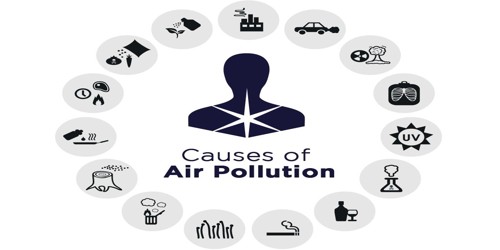Biodiversity is life. Short for biological diversity, biodiversity refers to all life on Earth. It includes everything from micro-organisms to towering trees, tiny insects to large mammals, including humans. It is also the ecosystems in which organisms live and the differences within species. Between 10 and 100 million species are believed to exist, however, only about 1.7 million of these have been described. The species that comprise earth’s biodiversity took many millions of years to evolve to their particular environment and relationships to other plants and animals. Adapting to changes can take hundreds of years which will be threatened by rapid changes.
Why is biodiversity important?
Biodiversity is essential for sustaining life on earth, addressing poverty and preserving cultural diversity and identity.
Environment: All life is interconnected and losing one species has a flow-on effect on everything else. Humans depend on thousands of micro-organisms, plants, and animals to clean air and water, control pests, decompose organic matter, provide food, shelter, fuel, medicines, and fibers. Narrowing the range of resources, we use to provide for our needs makes us vulnerable to diseases, pests, and changes in the environment. Biodiversity provides us with the resources to develop and adapt.
Economy: From the subsistence farmer to the enormous agricultural consortiums producing food, timber, fibers, and drugs, biodiversity is important for earning an income. Agriculture is a major industry employing large numbers of people and earning a significant amount of each country’s income, particularly developing countries. Biodiversity provides the source for cheaper food, the introduction of higher learning, and yielding crops which will have economic benefits for all farmers, particularly the poor.
Culture: Traditional communities have many customs which follow the seasons of the year, the planting and harvesting, the wet and the dry. Cultural practices, ceremonies, foods, religion, and languages have developed together around the plants and animals of the area. The understanding of biodiversity and its connection to the land plays an important role in forming a community’s identity.
What are the main causes of biodiversity loss?
The following human activities are the main contributors to decline in biodiversity:
Habitat destruction and fragmentation
Land clearance, deforestation, draining wetland, and construction of dams for agriculture, fuel, construction of housing and roads all contribute to the destruction of finely-tuned ecosystems which support a wide variety of plant and animal life. Species may be forced to compete with others for shelter and food. This, in turn, accelerates extinction rates and has placed an increasing number of animals on the endangered species list.
Alien species
Non-native species, micro-organisms, plants, and animals, which have been introduced for a purpose or accidentally to a new area outside their natural range change the way ecosystems function and affect their ability to cope with environmental change. Without natural predators, they reproduce rapidly and threaten native species.
Pollution and climate change: Air, soil, and water pollutions from industry, construction, and transport, and power generation lead to chemical imbalances which radically change habitats and can kill species. The burning of fossil fuels for energy production is leading to increased levels of greenhouse gases in the earth’s atmosphere, changing weather patterns, and higher temperatures. Climate change can lead to higher sea levels, threatening coastal environments; and certain areas can be rendered too hot for species that once thrived.
Human demand: Providing food and shelter for the world’s rapidly increasing population is placing great pressure on the natural environment. Wetlands are being drained, grasslands cleared, forests logged and oceans are being over-fished. Hunting and trade in animal products, including illegal poaching, is threatening species with extinction. These pressures are increased for people who are poor.
Positive progress: As biodiversity has gained prominence on international agendas a number of positive steps have been taken to protect the globe’s ecosystems.
Monitoring: Various groups gather information about the number of species and health of the environment to provide a base for the protection of biodiversity. The International Union for Conservation of Nature and Natural Resources Red List of threatened species identifies species most in need of conservation attention if global extinction rates are to be reduced. It also provides a global index of the state of change of biodiversity.
Protecting biodiversity: International agreements such as the United Nations Convention on Biological Diversity, Millennium Development Goals (particularly Goal 7), and Convention on International Trade in Endangered Species of Wild Fauna and Flora (CITES) are some of the many international agreements committing countries to protect biodiversity.
Many countries have set aside land and sea as special protection areas. For example, Indonesia has instated seven new marine protected areas which cover 9,000 square kilometers, 45 percent of the regions shallow water ecosystems.
Gene banks store seed samples to preserve their important genetic material. They range from the farm-based individual collection to the Svalbard Seed Vault tunneled into the ice near the North Pole for ‘fail-safe’ protection.
Individual action: Local communities and individuals are reducing the use of fossil fuels, using renewable energy, switching off lights and appliances when not in use; buying products (such as wooden furniture or holiday souvenirs) that are made from sustainable sources and not from illegally logged forests or from endangered animal skin, fur or shell; and ensuring seafood is approved by the Marine Stewardship Council. They are also being active in local organizations which monitor and protect land and water resources.















